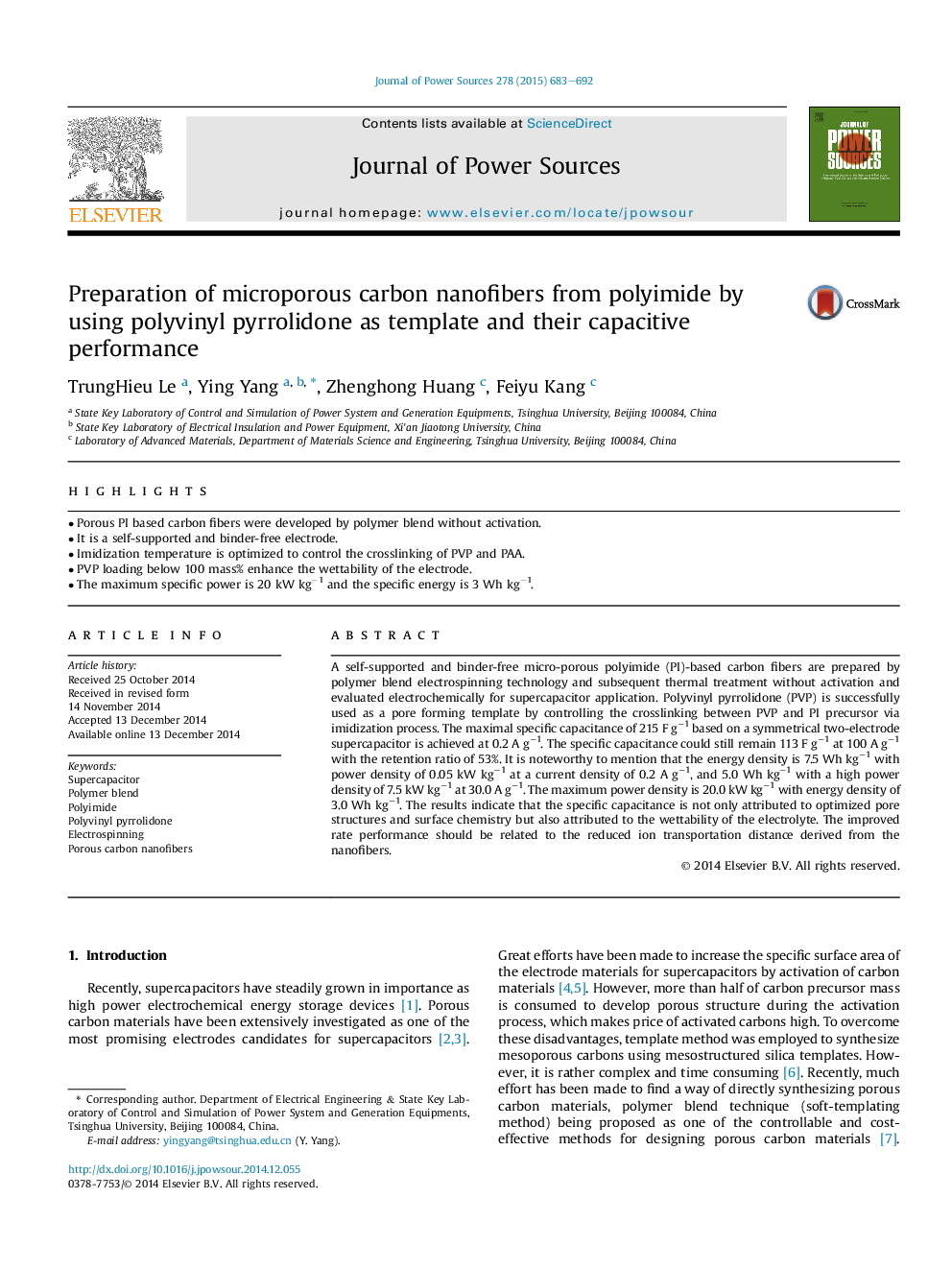| Article ID | Journal | Published Year | Pages | File Type |
|---|---|---|---|---|
| 7734569 | Journal of Power Sources | 2015 | 10 Pages |
Abstract
A self-supported and binder-free micro-porous polyimide (PI)-based carbon fibers are prepared by polymer blend electrospinning technology and subsequent thermal treatment without activation and evaluated electrochemically for supercapacitor application. Polyvinyl pyrrolidone (PVP) is successfully used as a pore forming template by controlling the crosslinking between PVP and PI precursor via imidization process. The maximal specific capacitance of 215 F gâ1 based on a symmetrical two-electrode supercapacitor is achieved at 0.2 A gâ1. The specific capacitance could still remain 113 F gâ1 at 100 A gâ1 with the retention ratio of 53%. It is noteworthy to mention that the energy density is 7.5 Wh kgâ1 with power density of 0.05 kW kgâ1 at a current density of 0.2 A gâ1, and 5.0 Wh kgâ1 with a high power density of 7.5 kW kgâ1 at 30.0 A gâ1. The maximum power density is 20.0 kW kgâ1 with energy density of 3.0 Wh kgâ1. The results indicate that the specific capacitance is not only attributed to optimized pore structures and surface chemistry but also attributed to the wettability of the electrolyte. The improved rate performance should be related to the reduced ion transportation distance derived from the nanofibers.
Keywords
Related Topics
Physical Sciences and Engineering
Chemistry
Electrochemistry
Authors
TrungHieu Le, Ying Yang, Zhenghong Huang, Feiyu Kang,
